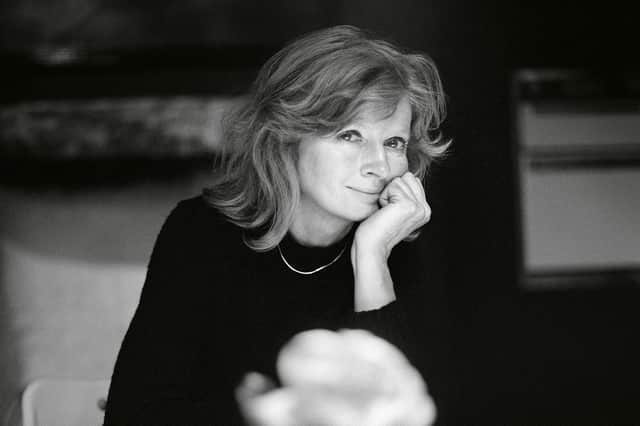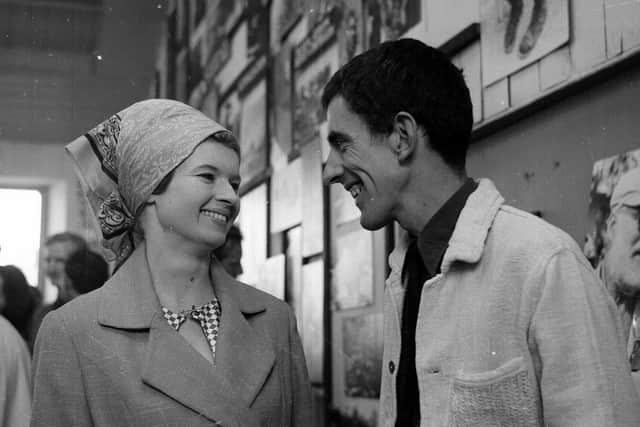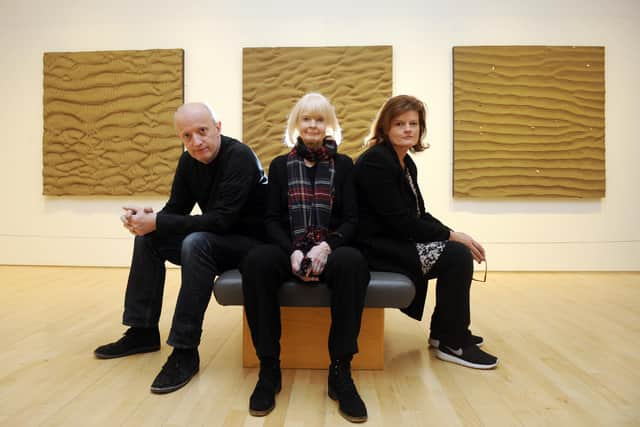Scotsman Obituaries: Joan Hills, Scottish artist at forefront of underground art scene


Joan Hills, artist and member of the Boyle Family collective, has died at the age of 92. A leading member of the underground art scene in Britain in the 1960s, she moved in circles that included Jimi Hendrix, Francis Bacon and Yoko Ono. Working collaboratively with her partner Mark Boyle and their children Sebastian and Georgia, she is best-known for the Boyle Family’s extraordinary facsimiles of random sections of the earth’s surface. Major exhibitions of their work have taken place at the Venice Biennale, the Hayward Gallery in London and the National Galleries of Scotland.
Joan was born in Edinburgh. Her father, Robert Little, ran a successful family plumbing business; her mother, Georgie, was a homemaker. She had an older sister, Mary. Joan wanted to enrol at Edinburgh College of Art but her father persuaded her to study building construction at Heriot-Watt College instead. She transferred to the Architecture department at Edinburgh College of Art in 1951. Soon after, she married Hamish Hills and they moved to Clare in Suffolk, where he worked as a grain merchant. Their son Cameron was born in 1952. The marriage did not last: they separated in 1956. A divorcee with a young child, she was not welcomed back by her family.
Advertisement
Hide AdAdvertisement
Hide AdJoan moved to Harrogate in Yorkshire where she opened a beauty salon in the living room of her first floor flat. Unable to afford heating, she spent long periods in the café downstairs. It was there, in April 1957, that she met Glasgow-born Mark Boyle. He organised supplies for the Ordnance Corps, but in practice spent most of his time writing poetry. He took her to a Chinese restaurant and later recalled that he had never seen anyone so ravenous (she had been living off Brussels sprout sandwiches). He moved in with Joan soon after.


Joan occasionally painted and Mark borrowed her materials and began painting on nearby demolition sites. His work attracted the attention of a collector who asked to see more of his work, whereupon Joan and Mark quickly conjured up an exhibition in their flat. To keep things simple, they said that all the paintings were his. That convenient pretence continued for some years, with jointly made works being attributed to Mark alone.
They moved to Paris briefly in 1960 and then settled in London. Joan worked as a chef at a restaurant behind the Royal Court Theatre. Mark joined her as head waiter. The clientele included famous actors and the “Angry Young Men” playwrights of the time. In 1963 Joan and Mark, who by then had three children – Cameron plus Sebastian, born in 1962, and Georgia in 1963 – took the plunge and left their jobs to become artists. In the early 1960s they began making sculptures from rubbish scoured from demolition sites. Richard Demarco invited them to show these “junk reliefs” at the Traverse Theatre Club in Edinburgh in August 1963. In September they took part in the first ever “Happening” in Britain, at Edinburgh’s McEwan Hall. Censorship laws prohibited naked figures from walking on stage, so they pushed a nude model about on a trolley. A scandal erupted and questions were asked in Parliament.
They lived on two levels of a big house in Queens Gate, letting spare rooms out to people like actor Nicol Williamson and saxophonist Bruce Turner. Their parties were famous – Robert Rauschenberg came to one in 1964, fresh from his success at the Venice Biennale. It was Joan, more than Mark, who attended talks at the Institute of Contemporary Arts, still a crucible of radical, avant-garde art. John Latham and Gustav Metzger became close friends. Joan was a founder of the Artist Placement Group, and she worked as an assistant to the film editor Julia Wolf.
In 1964 they began finding their subject matter at random, by throwing the front of a TV set around demolition sites and fixing down whatever debris it landed upon. They then developed a technique of somehow replicating bare earth, paving and Tarmac. Resin and fiberglass were involved but Boyle Family rejected the word “cast” and managed to keep the technique a secret.


Their works were shown at the Indica Gallery in London in 1966. Funded by Paul McCartney, this was the gallery where Mick Jagger met Marianne Faithfull and where Yoko Ono met John Lennon. Joan and Mark were right at the front edge of a movement of profound social change, where beatnik, rock, pop and hippy groups overlapped. They were pioneers of light projections in the early 1960s. Alongside the emerging psychedelic rock scene, they presented weekly light shows at the UFO Club and in 1968 toured the USA with Soft Machine and Jimi Hendrix.
In 1967 they began selecting sites for their sculptures by throwing darts at maps of London. They made exact replicas of the earth’s surface where the dart had landed. The following year, friends shot darts at a huge map of the world, initiating their celebrated “World Series”. With the children, they travelled around Europe in an old, converted ambulance, ticking off the first of their sites. The children later acknowledged that they never had a normal family holiday.
Mark Boyle represented Britain at the 1978 Venice Biennale – although the work was in fact made by the whole family. They began exhibiting as Mark Boyle and Joan Hills elsewhere that year and in 1985 became, definitively, Boyle Family. While Mark was often the first to speak at interviews, Joan’s voice carried equal weight. Strikingly attractive, warm and friendly, she chose her words carefully and delivered them in a soft Edinburgh accent and with a smile. Everyone looked and listened when she spoke.
Advertisement
Hide AdAdvertisement
Hide AdIn 1999 Mark and Joan married. They chose a registry office right in the middle of England, in Coalville, Leicestershire. Not even their children knew. Mark died in 2005 and in 2012 Joan left their Greenwich home and moved to Kennington. She continued working until very recently. She is survived by her children Cameron, Sebastian and Georgia and three grandchildren.
Obituaries
If you would like to submit an obituary (800-1000 words preferred, with jpeg image), contact [email protected]